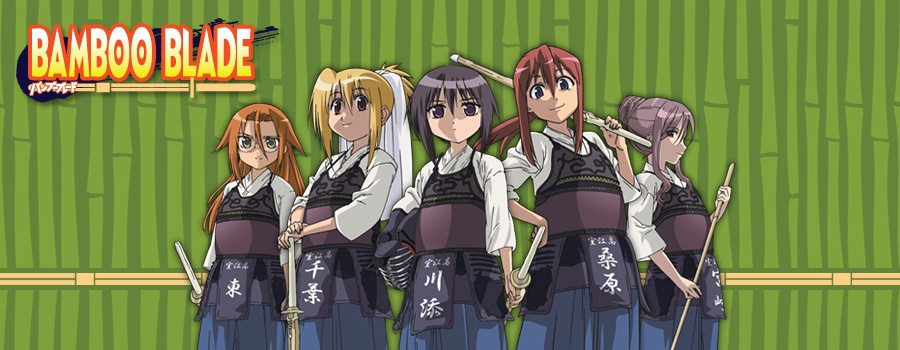Bamboo Blade was initially a manga that started its run in 2004 eventually getting an anime adaptation that ran for 26 episodes between 2007 and 2008.

The anime follows the life of Kawazoe Tamaki, an introvert with a love for kendo. While she possesses a great deal of skill in the Japanese sport, she refuses to join her school’s kendo club. After many attempts, the school’s kendo coach manages to bring her into the small club with the intention of having her win an upcoming tournament.
Bamboo Blade is came out at a time when the school girl theme was in full swing. This essentially meant that most series that followed the same formula would be less talked about and would garner a lower audience count. While the setting may seem generic, personally, the show did manage to stand out from the rest simply because it focused on something that I was not well versed in as a fan of anime outside of Japan. The show highlighted the Japanese sport of kendo in more than one way and showed an aspect of Japanese culture that I was not fully aware of.
The anime featured a set of main characters who were all discovering kendo from a different perspective. For instance, Kawazoe Tamaki was a character that was already highly skilled in the sport capable of defeating many skilled opponents at the beginning of the series. Her experience of kendo however, expanded throughout the anime. She was put in a position where she had to interact with club members and eventually be a part of a team. For someone who was initially so focused on just the sport and her own love for it, her growth came from having to experience kendo with others. Another example would be Satori Azuma, referred to as Satorin in the series, while almost equal in skill to Kawazoe Tamaki, refused to join the club for a different reason. Satorin was a character that chose to prioritize her studies as her performance was not up to par. She highlights the value that the Japanese place on studies and academic performance. Satorin was one who was passionate and capable in kendo but initially couldn’t pursue it due to the premium placed on good academics.

Aside from following the growth of characters in the world of kendo, the viewers are allowed to learn about the sport alongside the characters. Miyazaki Miyako, called Miya Miya in the show, is a beginner who only joined kendo to be with her boyfriend. The show manages to utilize the background of its characters to paint a picture of the culture behind the sport and the discipline that is involved in kendo. Bamboo Blade effectively teaches the viewer about the different rules and the specialized training that is involved in kendo through the lens of its characters. Interestingly, it features the experience of characters going from training to actual competition covering a spectrum of development and expanding on the skill level necessary to participate in the competitive world of kendo.
The premium and focus that the show placed on kendo really gave it a refreshing twist. Covering kendo culture with that amount of depth through the medium of anime allowed for viewers even outside of Japan to get a glimpse of a side of Japanese culture that is sometimes overlooked or not quite understood. Before watching Bamboo Blade, one might have seen kendo as a sport that basically just involved hitting others with bamboo sticks. After watching however, there is a deeper appreciation for the sport and the rules behind it. One is left with more understanding of the discipline required to practice and maintain a certain form to reach a level of skill that is apt for competition.
Bamboo Blade leaves a lasting impression because of its characters’ dynamics and backgrounds and how their individual paradigms allowed viewers to understand kendo better. It highlighted an aspect of Japan that is often overlooked by non-Japanese anime fans and really fostered a better understanding and deeper appreciation for kendo and the Japanese culture in general.
